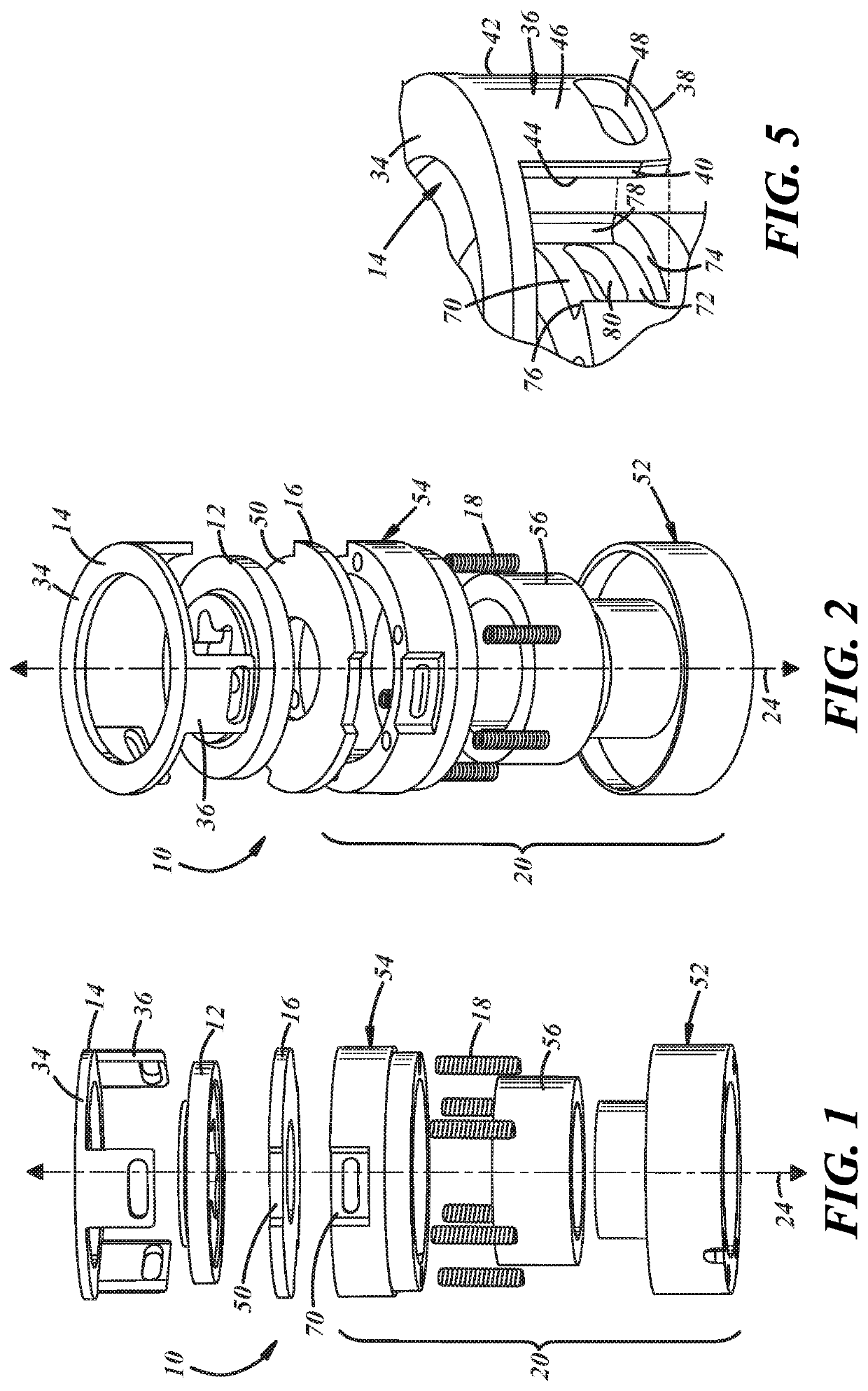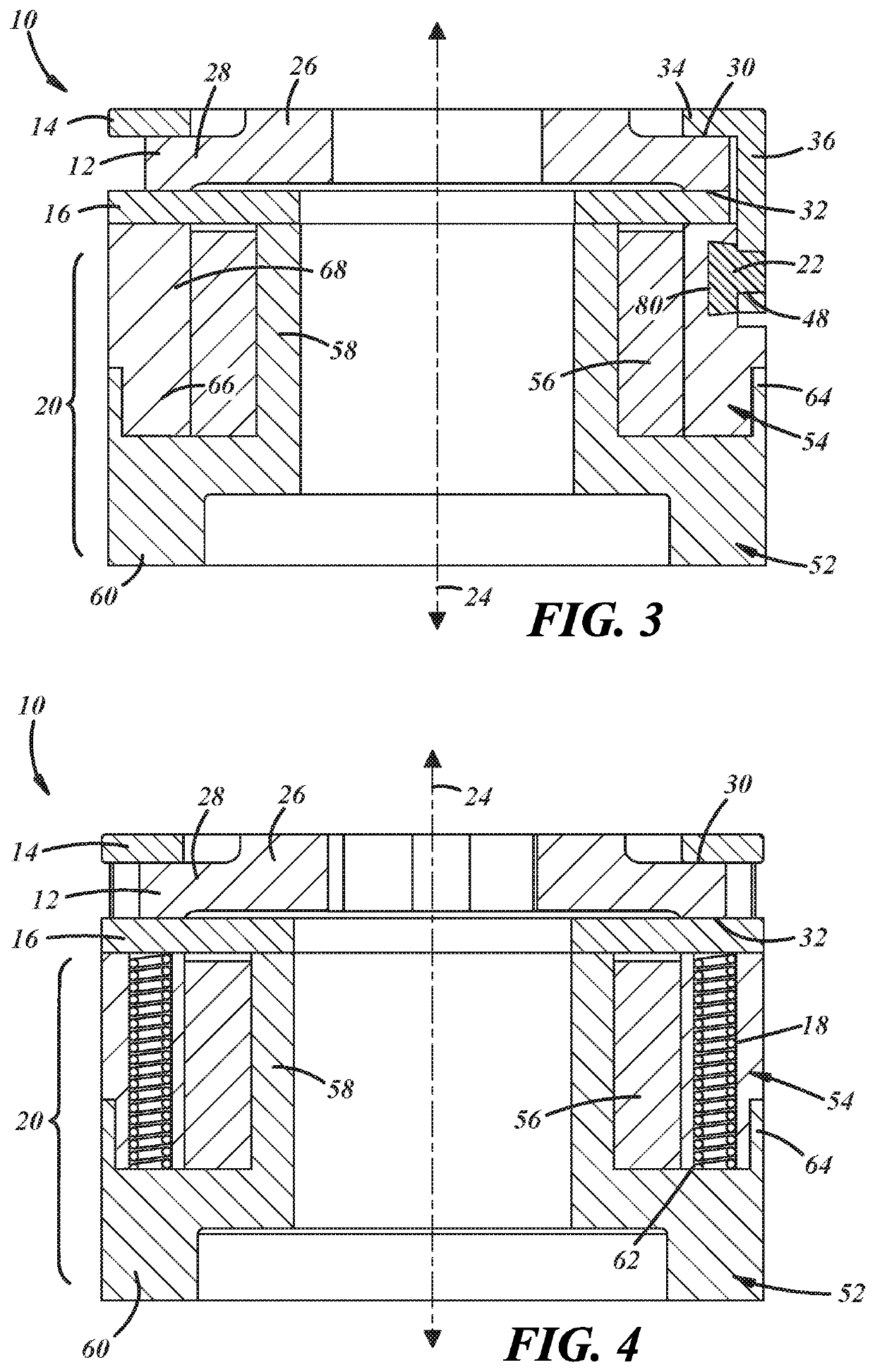Miniature brake and method of assembly
a technology of brakes and brake components, applied in the field of electric brakes, can solve the problems of limiting the size of the brake and the amount of brake torque that can be generated, and achieve the effects of preventing contamination of friction surfaces, high torque, and efficient assembly of the brak
- Summary
- Abstract
- Description
- Claims
- Application Information
AI Technical Summary
Benefits of technology
Problems solved by technology
Method used
Image
Examples
Embodiment Construction
[0012]Referring now to the drawings wherein like reference numerals are used to identify identical components in the various views, FIG. 1-4 illustrate a brake 10 in accordance with one embodiment of the invention. Brake 10 provides a braking torque to a rotatable body such as a shaft, gear, pulley, blade, etc. in order to slow or halt rotation of a rotating body or to prevent rotation of a stationary body (i.e., a parking brake). It will be understood by those of ordinary skill in the art that brake 10 may be used in a wide variety of industrial and other applications requiring a brake. Brake 10 may include a friction plate 12, a pressure plate 14, an armature plate 16, means, such as springs 18, for biasing armature plate 16 in one direction, and means, such as electromagnet 20, for urging armature plate 16 in another direction. Referring to FIG. 3, in accordance with one aspect of the present teachings, brake 10 may also include one or more fasteners 22 used to couple the pressur...
PUM
 Login to View More
Login to View More Abstract
Description
Claims
Application Information
 Login to View More
Login to View More - R&D
- Intellectual Property
- Life Sciences
- Materials
- Tech Scout
- Unparalleled Data Quality
- Higher Quality Content
- 60% Fewer Hallucinations
Browse by: Latest US Patents, China's latest patents, Technical Efficacy Thesaurus, Application Domain, Technology Topic, Popular Technical Reports.
© 2025 PatSnap. All rights reserved.Legal|Privacy policy|Modern Slavery Act Transparency Statement|Sitemap|About US| Contact US: help@patsnap.com


